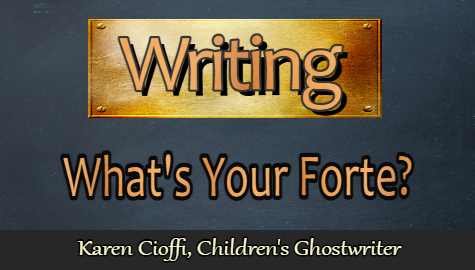Writing is such a unique journey for each and every writer.
Some find it easy to merge their chapters seamlessly into one another. Others find it easy to craft that ‘just right ending,’ with a twist or surprise that gives it a great edge. And there are some authors who find it easy to jump right into a story, writing a grabbing beginning.
No matter what aspect of the story, there will be some writers who can breeze through it effortlessly while others may struggle. That’s the nature of writing.
I find it relatively easy to start a story. I can create a beginning that jumps into the action, which is what most stories, especially children’s stories, need.
But… yep, there’s a BUT. I can find it challenging to end my stories. I have no idea why. I can start it and bring it along toward an ending, but then I fizzle out. My endings can initially be weak and lacking substance.
While I noted this weakness in my writing, it didn’t really hit home until I submitted a manuscript to a children’s publisher. I pitched the story to the publisher during an online writers conference. The publisher allowed me to submit a synopsis and the first three chapters.
The editor who read the chapters and synopsis liked the storyline but was confused about my ending in the synopsis. As I mentioned earlier, I can struggle with my endings. Aside from that, the editor recommended that the publisher request the manuscript so they could look it over. They advised me to edit it first and work on the ending. And so I did. I created an entirely new ending and sent it to a professional editor for review.
It’s funny, but I think that at times there are forms of inspiration can take us where we don’t usually tread… that help us overcome our obstacles or mountains and take us beyond what we think we’re capable of.
In the case of my story, “Walking Through Walls,” I came up with a pretty good ending that tied everything together and provided a surprise. I worked on this story for around two years, and finally, when it counted, I found the right path for the story to take.
We writers must pay attention to our writing weak spots and work on them. I was fortunate that an editor and publisher looked beyond my weak points and gave me the opportunity to improve my story. This is not always the case.
So, what’s a writer to do?
Well, the very basics are simple:
1. Make sure you’re part of a critique group that includes both new and experienced writers. The critique members may be able to help you overcome the hurdles. At the very least, they’ll catch a number of mistakes in everything from structure to grammar that you missed.
2. If you have to, write a few different scenarios in the section you’re having trouble with to help you open up. And if you’re still having trouble with your story, put it away for at least a week, preferably more, and then go back to it. It’s almost like magic; you’ll see it differently, with a newness and awareness. And listen when inspiration comes knocking!
3. Read a lot of quality books in the genre you’re writing and even copy sections of them word-by-word. Make sure to include recently published books by top publishers. This is a trick to get your brain to think and write ‘good writing.’ Please note that this should only be done for practice purposes. Never, ever use someone’s work as your own – that’s plagiarism.
4. Practice your writing—hone your craft. My endings have improved through working and practice. This is why there’s a saying, “practice makes perfect.” Well, if not perfect, at least much better!
5. If nothing else works, hire a developmental editor or ghostwriter to help rewrite the sections you’re having difficulty with.
So, the tip of the day: Pay attention to where your writing weak spots are and work on them. You have options to help you get your story right.
And listen when inspiration comes knocking!
Now, back to the title of the post: What’s your writing forte?

5 Top Fiction Writing No-Nos
Build Confidence as a Writer – 12 Ways
Writing – 6 Essential Steps to Publication

I’m a working children’s ghostwriter, rewriter, and coach. I can help turn your story into a book you’ll be proud to be the author of, one that’s publishable and marketable.
OTHER HELP OFFERED:
HOW TO WRITE A CHILDREN'S FICTION BOOK
A DIY book to help you write your own children’s book.
FICTION WRITING FOR CHILDREN eCOURSE
4-Weeks / 8 Sections Guided Self-Study Mentoring Program
You can contact me at kcioffiventrice@gmail.com.


Excellent advice, Karen. After much personal review of my work and feedback from critique members I’m aware dialogue is a strength of mine, but showing versus telling is something that needs some work. I know the concept, but the words don’t come as easy to me as I would like.
Cheryl, I hear you and so do most other writers. It’s not as easy as it sounds to simply show rather than tell. Glad you found the post helpful and thanks for taking the time to comment!